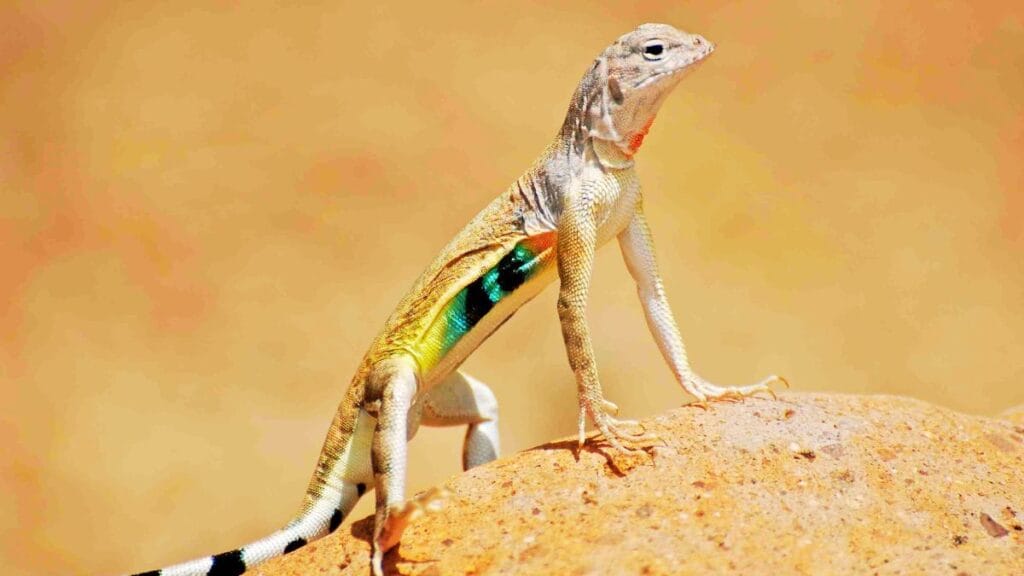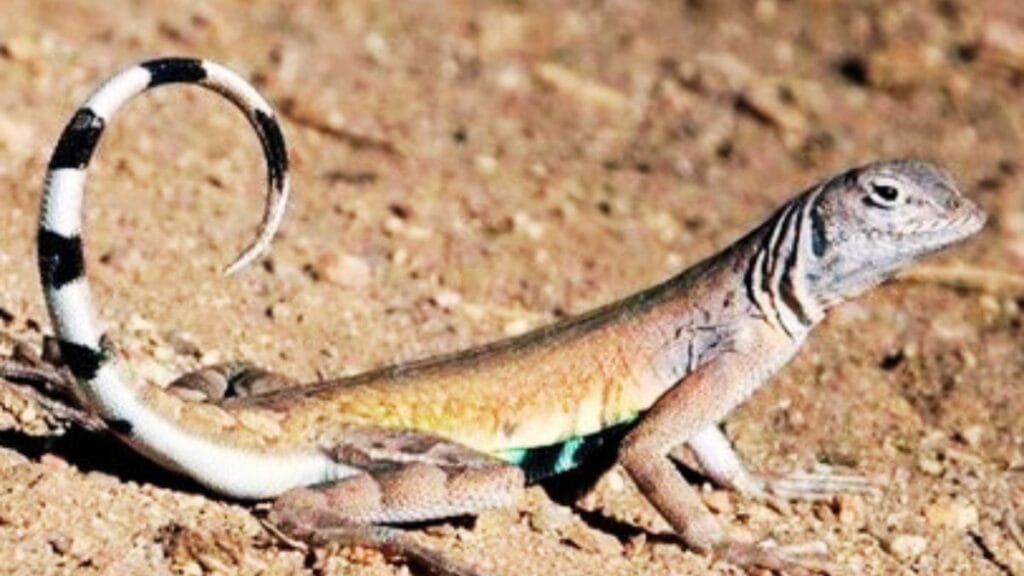Zebra-tailed lizards are small lizards mainly native to the southwestern United States, adjacent northwestern Mexico, and Central America. Nine recognised subspecies have been discovered to date.

People often wonder if these lizards are poisonous, but they miss some interesting and lesser-known facts about Zebra-tailed lizards. Here are nine lesser-known interesting facts about them.
Table of Contents
9 Lesser-Known Facts About Zebra-Tailed Lizards:
Zebra-tailed lizards are small-sized lizards:
Zebra-tailed lizards are small lizards ranging from 2.5 to 4 inches (64 to 102 mm) in snout–vent length. Their color may vary from grey to sandy brown with a series of paired dark gray spots down the back.
Sexual dimorphism is present in these lizards; males and females can be identifiable with the naked eye. Male lizards have a pair of black blotches on their sides and blue patches on their bellies. In females, the black marks are either faint or absent, and blue patches are completely absent.
They are the king of deserts:
Zebra-tailed lizards prefer to live in extreme conditions, such as open deserts with hard-packed soil and scattered vegetation, rocks, typically flats, washes, and plains.
They are very fast:
Zebra-tailed lizards are very fast while running, especially sprinting a short distance. These lizards can sprint at a speed of 28 miles per hour (45 kmph) for a short distance.
They usually run semi-erect on only their hind legs and their tails curled forward, making them the fastest creatures in the deserts.
They are omnivorous:
Zebra-tailed lizards mostly feed on prey like insects, moths, ants, bees, and other smaller lizards. However, sometimes they also consume vegetation such as flowers and spring buds.
They have low life expectancies:
In the wild, Zebra-tailed lizards generally live 2 to 5 years. However, with proper care in captivity, these lizards may live up to 7 years.

Zebra-tailed lizards are non-poisonous:
There is a popular belief that a venomous gland is present on the tail of zebra-tailed lizards. However, this is not completely true. These lizards are non-poisonous and harmless to human beings and other animals. However, their tails might harm some smaller animals and birds.
These lizards are mainly solitary:
Zebra-tailed lizards are primarily solitary reptiles; each individual requires lots of space to live, i.e., 600 to 800 m2 per lizard.
However, if you keep two or more lizards in the same place, they may not create trouble like other reptiles, but they might be unhappy with your decisions.
They have an interesting defence mechanism:
Zebra-tailed lizards are diurnal and alert and active in all but the hottest weather. During the hottest time, they stand alternately with two legs and can even run with their back legs for a short distance.
When they are threatened, these lizards can run swiftly with their toes curled up and tails raised over their backs, exposing their black straps on their tails.
They burrow in sandy soil, and whenever they are chased by predators, these lizards hide inside their burrows.
They are not suitable pets for first-time owners:
Zebra-tailed lizards are wild species and prefer to live in extremely hot weather. They are not comfortable living as pets inside houses.
Hence, it is advised not to keep them at your home as pets, especially if you don’t have enough knowledge and experience about them.
These lizards are extremely hard to train, and being wild species, they are very disease-prone. Additionally, their low life expectancy gives them a disadvantage as pets.
Also Read: 9 Facts About Iguanas You Must Know Before You Pet Them
Also Read: 7 Fun Facts About The Viral Frilled Lizards Will Surprise You